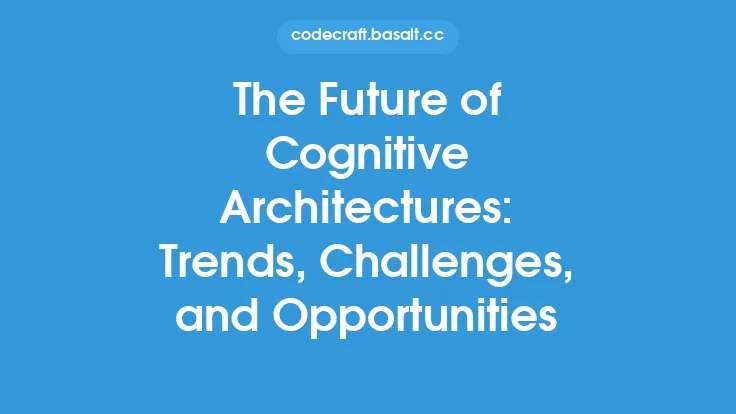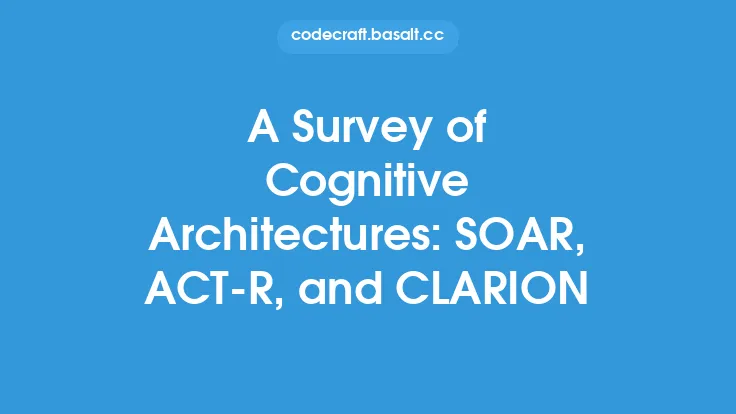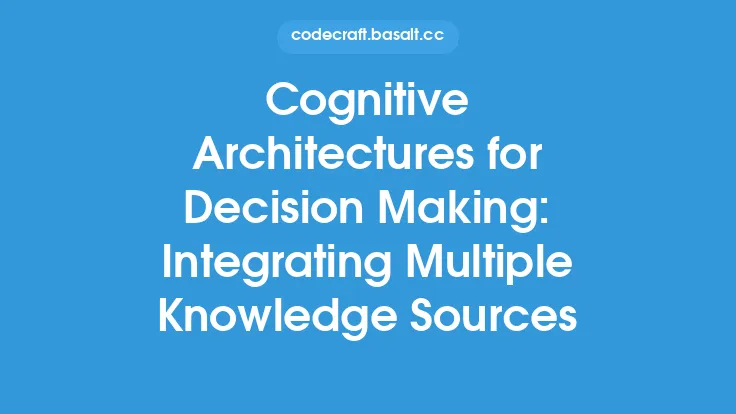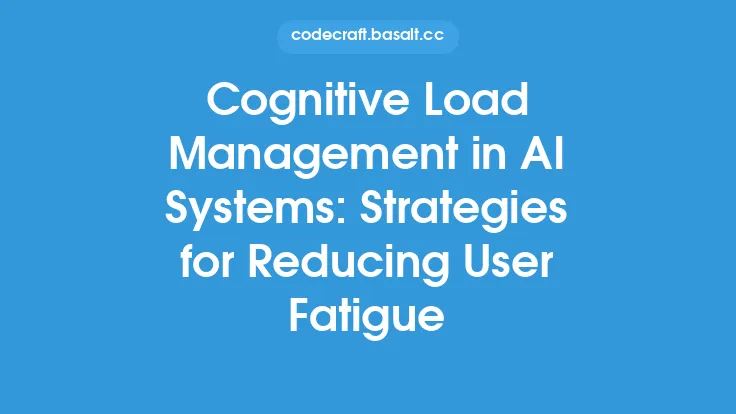The integration of cognitive architectures and neuroscience has led to significant advancements in the field of artificial intelligence. By drawing inspiration from the human brain and its intricate workings, researchers have been able to develop more sophisticated and efficient computing systems. This intersection of cognitive architectures and neuroscience has given rise to a new paradigm in artificial intelligence, one that seeks to replicate the remarkable abilities of the human brain in machines.
Background and Motivation
Cognitive architectures are software frameworks that simulate human cognition, providing a structured approach to integrating multiple artificial intelligence (AI) components. They are designed to mimic the human brain's ability to process information, reason, and learn. Neuroscience, on the other hand, is the study of the structure and function of the brain and nervous system. By combining these two fields, researchers aim to create more advanced AI systems that can learn, adapt, and interact with their environment in a more human-like way. The motivation behind this integration is to overcome the limitations of traditional AI approaches, which often rely on rigid rules and lack the flexibility and creativity of human cognition.
Brain-Inspired Computing
Brain-inspired computing is a subfield of artificial intelligence that seeks to develop computing systems that mimic the structure and function of the brain. This approach is based on the idea that the brain is a highly efficient and adaptive computing system, capable of processing vast amounts of information in real-time. Brain-inspired computing involves the use of neural networks, which are composed of interconnected nodes (neurons) that process and transmit information. These networks are designed to mimic the brain's ability to learn and adapt, allowing them to improve their performance over time. Brain-inspired computing has led to significant breakthroughs in areas such as image recognition, natural language processing, and decision-making.
Cognitive Architectures and Neural Networks
Cognitive architectures and neural networks are closely related, as both are designed to simulate human cognition. Cognitive architectures provide a framework for integrating multiple AI components, while neural networks provide a means of implementing these components. Neural networks can be used to implement various cognitive functions, such as perception, attention, and memory, within a cognitive architecture. The integration of cognitive architectures and neural networks has led to the development of more advanced AI systems, capable of learning, reasoning, and interacting with their environment in a more human-like way.
Neuroscientific Insights
Neuroscientific insights have played a crucial role in the development of cognitive architectures and brain-inspired computing. Studies of the brain's structure and function have provided valuable information about how humans process information, reason, and learn. For example, the discovery of neural oscillations and their role in information processing has led to the development of more efficient neural networks. Similarly, the study of brain regions and their functions has provided insights into how to design more effective cognitive architectures. Neuroscientific insights have also highlighted the importance of embodiment and sensorimotor interaction in cognition, leading to the development of more advanced robotic systems.
Applications and Implications
The integration of cognitive architectures and neuroscience has significant implications for a wide range of applications, from robotics and autonomous systems to healthcare and education. Brain-inspired computing has the potential to revolutionize areas such as image recognition, natural language processing, and decision-making, leading to more efficient and effective AI systems. Cognitive architectures, on the other hand, provide a framework for integrating multiple AI components, allowing for the development of more advanced and human-like AI systems. The applications of this research are vast, ranging from the development of more advanced robotic systems to the creation of more effective educational tools.
Challenges and Future Directions
Despite the significant advancements in the field, there are still several challenges that need to be addressed. One of the major challenges is the development of more efficient and scalable neural networks, capable of processing vast amounts of information in real-time. Another challenge is the integration of cognitive architectures and neural networks, which requires a deeper understanding of how the brain processes information and how to replicate this in machines. Future research directions include the development of more advanced brain-inspired computing systems, the integration of cognitive architectures and neuroscience, and the application of this research to real-world problems. Additionally, there is a need for more collaboration between researchers from different fields, including computer science, neuroscience, and psychology, to advance our understanding of human cognition and develop more advanced AI systems.
Conclusion
The integration of cognitive architectures and neuroscience has led to significant advancements in the field of artificial intelligence. By drawing inspiration from the human brain and its intricate workings, researchers have been able to develop more sophisticated and efficient computing systems. Brain-inspired computing has the potential to revolutionize areas such as image recognition, natural language processing, and decision-making, leading to more efficient and effective AI systems. As research in this area continues to evolve, we can expect to see more advanced AI systems that are capable of learning, adapting, and interacting with their environment in a more human-like way. The implications of this research are vast, ranging from the development of more advanced robotic systems to the creation of more effective educational tools, and it is likely to have a significant impact on our daily lives in the years to come.





